![剑桥医学英语 [Professional English in Use Medicine]](https://pic.tinynews.org/10064223/51a1ea79-31d1-4686-9576-2bafc79979ec.jpg)

具体描述
编辑推荐
professional English in Use Medicine contains 60 units covering a wide variety of medical vocabulary. Topics include diseases and symptoms, investigations, treatment, examining, and prevention. The book also introduces general medical vocabulary related to parts and tuncions of the body, medical and para medical personnel, education and training, research, and presentations. Primarily designed as a self study reference and practice book, it can also be used for classroom work and one [o one lessons and is suitable for intermediate and upper intermediate studuentsProtessional English in Use Medicine has been carefully researched using the Institute for Applied Language Studies medical corpus, as well as authentic texts, document sand cases 60 easy-to-use units: vocabulary items are presented and explained in context on left-hand pages with a range of practice exercises on right-hand pages. A focus on functional language, such as taking a history and examining, gives learners the confidence and ability to function in English in a medical environment."Over to you sections allow learners to apply the vocabulary they have learned in the unit to their own working lives.Includes a comprehensive, learner-friendly answer key and index.
Protessional English in Use Medicine is a must for medical practitioners who need to use English at work or for study, either in their own country or abroad.
内容简介
《剑桥医学英语》是为学习医学且具有中高级英文水平的学习者设计的,它提供的医学专业英语,有助于提高学习者对医学期刊、书籍的阅读水平,帮助医学工作者或学生参加医学国际会议,或到讲英语的国家作短期海外实习。此书可作为自学的学习资料,也可以作为课堂教学的课本,既可一对一来学习还可以学习小组的形式来学习。
《剑桥医学英语》由60个双页主题单元组成,前46个主题涵盖了医学领域的方方面面,从健康、疾病到调查研究。其余的14个单元侧重于介绍有关医学的沟通技能。
每一个单元的左手边页,详细地解释了关键词和表达方式;右手边页上的一系列练习则会帮助学习者检查和进一步理解所学到的知识。
书的后面附有练习答案和附录。
《剑桥医学英语》有特色的地方是每一单元都设计有“请你参与”部分。这为每一位学习者提供了情景模拟的机会,可以将学习到的新词汇和表达法用到自己相关的医学专业领域中去,因而对新知识可以更好地消化和吸收。
内页插图
目录
INTRODUCTIONBASICS
1 Health and illness
A Asking about health
B Sickness
C Recovery
2 Parts of the body 1
A Parts of the body
B Referring to parts of the body
C Describing radiation of pain
3 Parts of the body 2
A The abdomen
B The chest
C The pelvis
4 Functions of the body
A Eating
B The five senses
C Other functions
D Less common functions
MEDICAL AND PARAMEDICAL PERSONNEL AND PLACES
5 Medical practitioners 1
A Practitioners
B Specialties
C Choosing a specialty
6 Medical practitioners 2
A Hospital staff
B Medical teams
C Shifts
7 Nurses
A Nursing grades
B Support workers
C Specialization
D The nurses role
8 Allied health professionals
A Community health
B Technicians
C Prosthetists and orthotists
D Opticians
9 Hospitals
A Introduction to a hospital
B Outpatients
C Inpatients
10 Primary care
A The National Health Service
B The practice team
C A GPs day
EDUCATION AND TRAINING
11 Medical education 1
A Medical education in the UK
B Extract from an undergraduate prospectus
C A students view
12 Medical education 2
A The Foundation Programme
B People in medical education
C Medical qualifications
13 The overseas doctor
A Types of registration
B PLAB
C PLAB stations and advice
SYSTEMS, DISEASES AND SYMPTOMS
14 Symptoms and signs
A Describing problems
B Presentation
C Talking about symptoms
15 Blood
A Full blood count
B Anaemia
C Pernicious anaemia
16 Bones
A Bones
B Fractures
C Treatment of fractures
17 Childhood
A Milestones
B Common infectious diseases
C Coeliac disease
18 The endocrine system
A Excess and deficiency
B Negative feedback systems
C Goitre
D A letter of referral
19 The eye
A Parts of the eye
B Examination of the eye
C Retinopathy
20 The gastrointestinal system
A Examination of the abdomen
B The faeces
21 Gynaecology
A The female reproductive system
B Menstruation
C A gynaecological consultation
D Contraception
22 The heart and circulation 1
A Shortness of breath
B Heart rhythm
C Heart failure
23 The heart and circulation 2
A Physical examination
B Examining the heart and circulation
24 Infections
A Fever
B Microorganisms
C Source and spread of infection
25 Mental illness
A Psychiatric disorders
B Substance abuse
C Affective disorders
D Neurotic and stress-related disorders
E Other types of functional disorder
26 The nervous system 1
A Sensory loss
B Motor loss
C Loss of consciousness
27 The nervous system 2
A The motor system
B Tendon reflexes
C Coma
28 Oncology
A Neoplasms
B Symptoms and signs of malignancy
C Treatment of tumours
29 Pregnalacy and childbirth
A Childbirth
B Labour
C Presentation and lie
30 The respiratory system
A Cough
B Auscultation
31 The skin 1
A Some types of skin lesion
B Rashes
32 The skin
A Injuries to the skin
B Case report
C Sores
33 The urinary system
A Urinary symptoms
B Urinalysis
INVESTIGATIONS
34 Basic investigations
A Ophthalmoscopy
B Blood pressure
C Taking blood
35 Laboratory tests
A A Microbiology test request form
B A Biochemistry and Haematology lab report
C Terms used to describe lab results
36 Endoscopy
A Functions of endoscopy
B Enteroscopy
C Report of a diagnostic endoscopy
37 X-ray and CT
A Radiography and radiology
B X-ray examination
C Computed Tomography
38 MRI and ultrasound
A Magnetic Resonance Imaging (MRI)
B Ultrasound
C Preparing for medical imaging
D Describing medical imaging
39 ECG
A Uses of an ECG
B ECG procedure
C A normal ECG
TREATMENT
40 Medical treatment
A Prescriptions and drugs
B The British National Formulary
41 Surgical treatment
A The operating theatre
B Instruments
C The operation
D An operation report
42 Therapies
A Radiotherapy and chemotherapy
B A day in the life of a physiotherapist
C Cognitive Behavioural Therapy
PREVENTION
43 Screening and immunization
A Screening
B Common screening tests
C Immunization for travellers
EPIDEMIOLOGY
44 Epidemiology
A Rates
B Incidence and prevalence
C Association and causation
ETHICS
45 Medical ethics
A GMC guidelines
B Bioethical issues
C Assisted dying
RESEARCH
46 Research studies
A Case-control studies
B Cohort studies
C Trials
D Variables
TAKING A HISTORY
47 Taking a history 1
A A full case history
B Personal details
C Talking about pain
48 Taking a history 2
A Drug history
B Family history
C Social and personal history
49 Taking a history 3
A Reviewing the systems
B Asking about the central nervous syster
C Patient ideas, concerns and expectation
D Phrasal verbs in history-taking
EXAMINATION
50 Physical examination
A Examining a patient
B Giving instructions
51 Mental state examination
A Some symptoms of psychiatric disorders
B Mood
C Typical questions from a mental state examination
EXPLANATION
52 Explaining diagnosis and management
A Explanations
B Using lay terms in explanations
C An explanation of angina
53 Discussing treatment
A Offering options
B Advising a course of action
C Advising patients to avoid something
D Warnings
54 Giving bad news
A Principles of giving bad news
B A consultant medical oncologists report
PRESENTATIONS
55 Data presentation 1
A Referring to a table or figure
B Comparing variables
C Approximating
56 Data presentation 2
A Line graphs
B Pie charts
C Describing trends
57 Research articles
A The structure of a research article
B Objectives
C Main findings
58 Abstracts
A Structured abstracts
B The BMJ abstract
59 Conference presentations
A The structure of a presentation
B The introduction
C Signalling
D The conclusion
60 Case presentations
A Sections of a case presentation
B Bedside presentation
C Slides
Appendix I
Parts of the body
Appendix Ⅱ
Medical abbreviations
Appendix Ⅲ
Types of medication
Appendix Ⅳ
Symptoms and pain
Appendix Ⅴ
Verbs used in instructions
Appendix Ⅵ
Lay terms and definitions
Answer key
Index
精彩书摘
Hospital staffThe people who work in any type of workplace, including hospitals, are called the staff.
The medical staff in a British hospital belong to one of four main groups:
A pre-registration house officer (PRHO), or house officer, is a newly graduated doctor i the first year of postgraduate training. After a yeaz; he or she becomes a registered medi practitioner. In the current system of training, the Foundation Programme, the name fol these junior doctors is Foundation Year I doctor (FY1). (See Unit 12)
A senior house officer (SHO) is in the second year of postgraduate training. The title is now Foundation Year 2 doctor (FY2), but the old terms senior house officer and SHO are still used.
A specialist registrar (SpR) is a doctor who has completed the Foundation Programme, and is training in one of the medical specialties. There are also some non-training registrdoctors who have completed their training but do not wish to specialize yet.
A consultant is a fully qualified specialist. There may also be some associate specialistssenior doctors who do not wish to become consultants. In addition, there is at least o medical (or clinical) director, who is responsible for all of the medical staff.
Medical teams
Consultant physicians and surgeons are responsible for a specific number of patients in the hospital. Each consultant has a team of junior doctors to help care for those patients. In many hospitals, there are multidisciplinary teams which consist not only of doctors but also of physiotherapists and other allied health professionals (see Unit 8). When patients enter - or are admitted to hospital, they are usually seen first by one of the junior doctors on the ward where they will receive treatment and care. The junior doctor clerks them takes their medical history (see Units 47-49) and examines them. Some time later, the registrar also sees the patients, and may order investigations or tests, for example X-rays or an ECG, make a provisional diagnosis, and begin treatment. The consultant usually sees the new admissions - people who have recently been admitted to the ward for the first time on one of the regular ward rounds, when the management of the patients is discussed with the registrar. Consultants also decide when a patient is ready to be discharged (sent home). On the ward round, the consultant is accompanied by the team and a nurse, and they visit all the patients in the consultants care. Shifts
Junior doctors now normally work in shifts, which means they normally work for eight hours every day, for example 7 am to 3 pm, and are then free until 7 am the next day. After a week they change to a different shift, for example 3 pm to 11 pm or 11 pm to 7 am. The alternative system is to work from 9 am to 5 pm every day and to take turns to be on call available to return to the hospital if necessary - from 5 pm to 9 am the next day. Days on call are set out in a rota, or list of names and times. Doctors on call carry a radio pager, or bleeper, a device which makes a noise when someone is trying to contact them.
前言/序言
用户评价
说实话,刚拿到书的时候,我有点担心它会过于侧重于某一个医学分支,毕竟医学领域过于宽泛。但这本书的广度确实出乎我的意料。它没有试图成为一本包罗万象的医学词典,而是巧妙地选择了那些在不同专科中都具有高度通用性的语言模块进行深化。例如,在处理“Informed Consent”的语言时,它不仅提供了标准化的法律术语,还区分了不同文化背景下与患者沟通时应注意的语气和措辞差异,这对于那些未来可能涉足国际医疗援助或者跨国合作项目的同事来说,是非常宝贵的软技能训练。我特别欣赏它对“Idiomatic Expressions in Medical Context”的处理方式。医学英语不全是冷冰冰的术语,有时候,地道的表达方式能让沟通更加顺畅和人性化。比如如何得体地表达“病情反复”或者“治疗效果不佳”,书中提供了一系列既专业又不失人情味的表达,避免了生硬的直译带来的尴尬。这种对语言情境(Context)的深度把握,使得这本书的实用价值远远超出了单纯的词汇记忆范畴,它培养的是一种语言的“敏感度”和“适用性”。阅读过程中,我感觉自己仿佛在参与一场跨越地域限制的真实医学研讨会,所有的语言障碍都在被这本书系统性地拆解和消除。
评分我更倾向于使用这本教材进行碎片化学习,因为它在设计之初就考虑到了现代医务工作者时间紧张的现实。每个单元的长度都控制得恰到好处,核心概念的讲解清晰明了,并且配有大量的练习题来即时巩固所学。这些练习题的设计非常巧妙,它们不是那种机械的“填空或选择”,而是更倾向于情景模拟和批判性思考。比如,它会给你一段冗长、信息密度极高的患者病史记录,然后要求你用不超过三句话的高度概括性的专业英语来总结关键问题,这极大地锻炼了我快速提炼信息和精准表达的能力。更重要的是,书中对发音和语调的细微之处也有所涉及,虽然是书本教材,但通过配合其配套的音频资源(我假设它有的话,因为好的教材通常都配套),能够帮助学习者建立正确的口语习惯。我发现,很多时候我们写得不错,但一开口就暴露了“书面语”的痕迹。这本书似乎早就预料到了这一点,通过结构化的练习,强迫我们把书本上的知识转化为可以自然流露的口头表达。这对于提升我在查房和病例汇报时的自信心,起到了决定性的作用。
评分我购买这本书纯粹是出于对提高专业英语表达准确性的迫切需求,毕竟在国际医学文献阅读和病例讨论中,一个词用错可能导致对病情理解的偏差。这本书最让我惊艳的是它对“学术写作规范”的强调。很多时候,我们习惯了中文的表达习惯,写出来的英文报告总感觉“中式英语”味太重,不够地道、不够简洁有力。这本书里专门开辟了一个版块,专门针对“Abstract Writing”和“Case Report Structure”进行了深入的讲解。它细致到了逗号该不该用、哪个介词放在动词后面最合适,甚至连那些看似不起眼的“连接词”如何使用才能让论述逻辑更加流畅,都做了详尽的对比分析。我记得有一次,我写一份关于罕见病的小报告,卡在如何用精准的动词来描述病理生理过程上,翻阅这本书的“Verbs in Pathology”部分后,我找到了好几个比我原来用的词汇更专业、更具学术性的替代方案。这种即插即用的实用性,让我在后续的写作中效率和质量都得到了显著提升。它不仅仅是在教你“怎么说”,更是在教你“怎么像一个专业的医学研究者那样去构建你的论述体系”。这套书的编排逻辑,仿佛是一位经验丰富的前辈,在你身边耐心批阅你的每一份文稿,并给出最切中要害的修改意见。
评分如果用一句话来总结我对这本《剑桥医学英语》的感受,那就是“一本真正懂得临床工作者需求的工具书”。它成功地在“专业深度”和“学习易用性”之间找到了一个近乎完美的平衡点。我个人最看重它对那些“灰色地带”语言的处理——那些没有标准答案,但需要根据具体情况灵活运用的表达。举个例子,在讨论药物不良反应(Adverse Drug Reactions, ADRs)时,如何用最合适的方式向病人强调依从性的重要性,同时又不至于显得过于恐吓或过于轻描淡写,这本书提供了一套阶梯式的语言选择。它不是简单地告诉你“用这个词”,而是解释了使用不同词汇背后的文化和心理影响。这种超越语言层面的“医学人文”关怀,是通过语言工具体现出来的,这一点让我非常欣赏。它不仅仅是提升了我的词汇量,更是拓宽了我作为一名医务人员进行高质量、高情商的跨文化专业交流的能力。这本书,我敢说,对于任何希望在国际医学舞台上站稳脚跟的同仁来说,都是一本不可多得的宝藏。
评分这本书的封面设计很有意思,那种深沉的墨绿色调,配上醒目的白色字体,一眼看上去就给人一种专业、严谨的感觉。我一直都在寻找那种不仅仅停留在基础词汇,更能深入到临床场景和学术交流层面的英语学习材料,而这本《剑桥医学英语》似乎就是我一直在追寻的那种“对的”书。它不像那种传统的教科书,动辄就是大段的理论讲解,而是更像是为你量身定做了一套“职场加速器”。比如,当我第一次翻到关于“Patient Communication”的那一章时,我立刻被吸引住了。它没有生硬地罗列一堆表达,而是通过一系列模拟的医患对话场景,手把手教你如何用更富同理心、更清晰的语言去解释复杂的病情,尤其是那些需要用委婉但又不失准确性的医学术语来表达的场合。那种细腻的差别,比如“X-ray shows an abnormality”和“We’ve noticed something on the scan that requires further investigation”之间的语气和效果差异,通过这本书的解析,变得异常清晰。这对于我们这些需要经常与国际同行交流、或者准备参加国际会议的医务人员来说,简直是醍醐灌顶。它真正做到了“用英语思考医学”,而不是“用中文思考然后翻译成英语”。这种沉浸式的学习体验,是其他任何泛泛而谈的英语书籍都无法比拟的。这本书的结构安排也极具匠心,章节之间的递进非常自然,从基本的病史采集到复杂的诊断报告解读,每一步都考虑到了实际操作中的语言难点。
评分很好的书,对学习很有帮助。
评分很好 是新书
评分非常好,用来学习的,提高很快!
评分一一一一一一一一一一一
评分for time to be delivered.At the same ti
评分staff is also very enthusiastic,and sometimes
评分哈哈哈嘿嘿嘿
评分挺好的,包装不错
评分快递速度快 ,包装好,书质量好,是正版。
相关图书
本站所有内容均为互联网搜索引擎提供的公开搜索信息,本站不存储任何数据与内容,任何内容与数据均与本站无关,如有需要请联系相关搜索引擎包括但不限于百度,google,bing,sogou 等
© 2025 book.idnshop.cc All Rights Reserved. 静思书屋 版权所有

![爆笑英语GO,GO,GO [11-14岁] pdf epub mobi 电子书 下载](https://pic.tinynews.org/11087735/rBEQWVEgqjsIAAAAAAOp--8VS_gAAAtBgAaUdIAA6oT003.jpg)
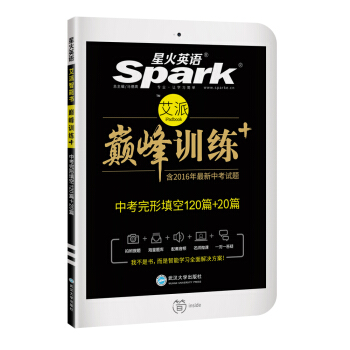

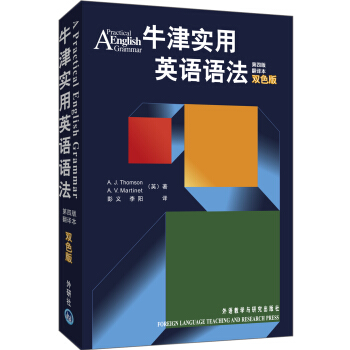

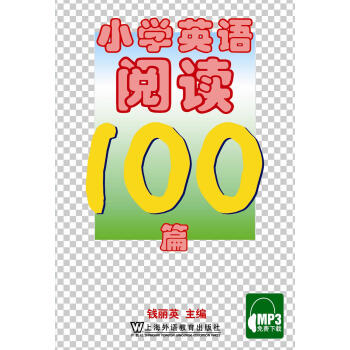

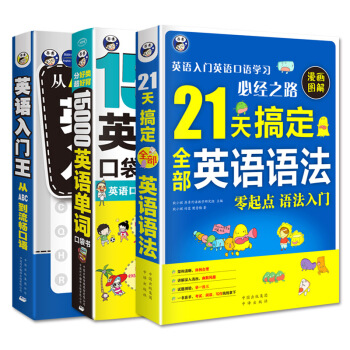
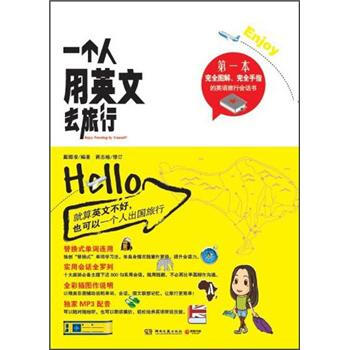
![牛津英语词汇(初级 修订版 附光盘) [Oxford Word Skills(Basic)] pdf epub mobi 电子书 下载](https://pic.tinynews.org/11704271/55778e02Nab321ac3.jpg)
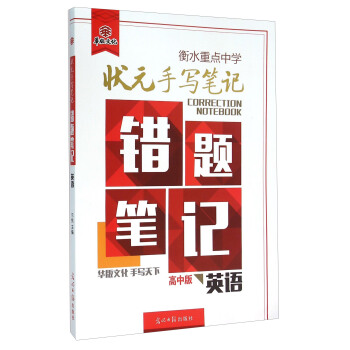

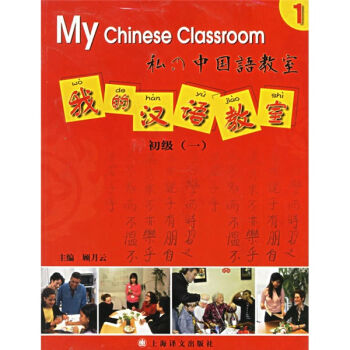

![牛津英语词汇(高级 修订版 附光盘) [Oxford Word Skills(Advanced)] pdf epub mobi 电子书 下载](https://pic.tinynews.org/11704264/557793f7Nf328bdaf.jpg)
![牛津英语词汇(中级 修订版 附光盘) [Oxford Word Skills(Intermediate)] pdf epub mobi 电子书 下载](https://pic.tinynews.org/11704269/55768a5fN95c9abe8.jpg)
![全新英语阅读:阅读理解(高一) [English Reading Comprehension Series] pdf epub mobi 电子书 下载](https://pic.tinynews.org/11909358/570e5a68N6d3b7f1b.jpg)
![我的汉语教室:初级(三 附光盘) [My Chinese Classroom] pdf epub mobi 电子书 下载](https://pic.tinynews.org/10013138/823e24ce-84b7-4967-9b4f-65f046c40432.jpg)

